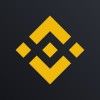The Render Network’s native utility crypto, Render Token (RNDR), enables users to efficiently tap into underutilized computational resources through a peer-to-peer (P2P) network. This system enhances traditional processes for rendering and streaming 3D environments and other visual effects. When storing RNDR, factors like security, user interface, compatibility with RNDR, and customer support should be considered. This guide reviews the best Render Token wallets as of 2025. Here’s where to store RNDR.
This guide highlights five top storage solutions for RNDR. The wallets were selected followingsix months of evaluation by BeInCrypto’s product testing teams. Here’s why each was chosen.
Coinbase Wallet
- Offers an intuitive user interface that simplifies buying, selling, and storing cryptocurrencies
- Supports a wide range of cryptocurrencies and tokens
- Features enhanced security measures, including biometric access controls
- Provides a built-in DApp browser to interact with decentralized applications
- Users can earn staking rewards on their holdings directly through the wallet
Ledger
- Designed as a hardware wallet that provides offline storage, enhancing security against hacks
- Supports 1,500+ cryptocurrencies and tokens for versatile asset management
- Features a robust security chip to protect private keys and device integrity
- Offers Ledger Live software that allows users to manage their crypto assets easily
- Integrates with third-party wallets and services for additional utility
- Users can verify transaction details on the device’s screen for added security
Trezor
- A hardware wallet that emphasizes security through offline storage and robust encryption
- Offers support for multiple cryptocurrencies, enabling users to manage a diversified portfolio
- Includes a secure PIN code system that prevents unauthorized access
- Allows users to back up their entire wallet with a 24-word recovery seed
- The device’s firmware is fully open-source, allowing community review and improvements
- Provides a user-friendly interface on both the device and accompanying software
OKX Wallet
- Supports a multi-chain wallet system that allows for storing a wide variety of digital assets
- Provides high-level security features, including multi-signature support
- Integrates trading features directly in the wallet, allowing users to trade assets without moving them to an exchange
- Features a built-in DeFi hub that enables users to interact with decentralized finance products
- Users benefit from on-chain analytics to help manage and optimize their portfolios
Binance
- Offers one of the largest cryptocurrency exchanges in the world with high liquidity
- Supports a wide range of cryptocurrencies and trading pairs
- Features an advanced trading platform with comprehensive charting tools and real-time data
- Provides an ecosystem with various services, including staking, savings, loans, and more
- Includes strong security measures, such as two-factor authentication and device management
For further information and insight into BeInCrypto’s verification methodologies, click this link.
Top Render Token wallets in 2025
1. Coinbase Wallet
Coinbase Wallet is an ideal option for storing Render Token (RNDR) thanks to its comprehensive features and robust infrastructure. As the largest publicly traded cryptocurrency exchange globally, Coinbase offers a dependable fiat gateway for crypto investors, making it easy to enter the market.
The wallet supports 250+ cryptocurrencies, including major assets like Bitcoin and Ethereum, representing about 45% of the exchange’s total trading volume. This variety ensures users access a broad range of assets alongside RNDR.
Coinbase Wallet seamlessly integrates with decentralized exchanges (DEXs) such as Uniswap and Raydium, allowing users to venture further into web3 ecosystems. The availability of a Coinbase debit card further enhances the user experience by enabling crypto to be spent like traditional money, with the added advantage of earning cash back on purchases. This blend of ease of use, versatility, and security makes Coinbase Wallet one of our top choices for managing and storing RNDR.
- Earn staking rewards on their holdings directly through the wallet
- Supports a wide range of cryptocurrencies and tokens
- Has a built-in DApp browser to interact with decentralized applications
- Integrates with most major exchanges, allowing for seamless trading
- May have higher fees compared to other platforms
2. Trezor
Trezor stands out due to its strong focus on security and practical features. The hardware wallet stores private keys offline and requires physical authentication. Additionally, Trezor’s software is open-source, allowing for community contributions to its development, which includes regular and significant firmware updates.
A touchscreen variant is available for those who prefer advanced interfaces. For users looking to hold RNDR long-term, Trezor presents a highly secure yet accessible and easy-to-use wallet option.
- Proven security track record
- User-friendly interface
- Broad cryptocurrency support
- Portfolio tracking
- It comes with a color LCD touchscreen
- Some blockchains are not supported
3. Ledger
Ledger wallets stand out for their robust hardware-software integration, which includes the ST33 secure element chip, designed to safeguard your assets with top-tier protective measures. Enhanced by Ledger’s proprietary Blockchain Open Ledger Operating System (BOLOS), this chip ensures a comprehensive security experience.
Furthermore, Ledger supports a passphrase feature, offering users a 24-word private key recovery option. This is crucial for users looking to retrieve assets if their device is lost or damaged. While it doesn’t include a multi-signature setup by default, Ledger is compatible with software like Specter and Electrum, which allows users to configure multiple signatures. This combination of advanced security features and flexibility in managing digital assets makes Ledger a top choice for those seeking a reliable crypto hardware wallet to store RNDR securely offline.
- Offers a 24-word recovery phrase feature
- Works seamlessly to enable features like multi-signature setups
- Compact and durable design
- Interface is accessible for users of all levels
- Ledger's proprietary operating system enhances the device's security
- On the pricier end of wallet choices
4. OKX Wallet
OKX Wallet is a popular choice for users looking to store and manage RNDR for many reasons. The wallet offers support for over 350 cryptocurrencies and more than 500 trading pairs. Moreover, the wallet’s appealing tier-based fee structure ranges from 0% to 0.23%, making it a cost-effective choice for traders at all levels. As well as offering low fees and secure RNDR storage, the wallet acts as a gateway to web3 and DeFi, with support for thousands of DApps and NFTs.
- Automated trading bots available
- Easy-to-use for beginners and experts
- Aesthetic interface
- Portal to web3
- Seamless cross-chain management
- Solid security arsenal
- Not available in the U.S.
5. Binance Web3 Wallet
Binance Web3 Wallet is highlighted as a good option to store RNDR for a number of reasons. The non-custodial wallet ensures users have full control over their private keys and does not rely on the centralized Binance exchange for key storage. It boasts extensive functionality, supporting multiple blockchains like Ethereum, Binance Smart Chain, Polygon, and Avalanche. Furthermore, MPC (multi-party computation) technology governs every transaction and mitigates single points of failure to ensure that assets are secure.
The wallet also integrates seamlessly with various decentralized exchanges (DEXs), including PancakeSwap and Uniswap, and offers options for staking and yield farming for users to earn rewards. Its compatibility with numerous decentralized finance (DeFi) applications makes it a versatile tool for users looking to both store RNDR and delve deeper into web3 ecosystems.
- Highly secure wallet
- Users have control of private keys
- User-friendly
- Multi-blockchain support, DEX integration, staking and yield farming, DApp integration
- Regulatory risk
Render token wallets compared
| Platform | Custody | Platforms supported | Type |
| Coinbase Wallet | Non-custodial | Browser extension, iOS and Android | Software |
| Ledger | Non-custodial | Browser extension, iOS and Android | Hardware |
| Trezor | Non-custodial | Browser extension, iOS and Android | Hardware |
| OKX Wallet | Non-custodial | Mobile/web extension | Software |
| Binance Web3 Wallet | Non-custodial | Browser extension, iOS and Android | Software |
What is Render Network?
Render is a decentralized network of computing power that enables the seamless rendering of high-quality graphics, animations, and other computational tasks. By leveraging the collective power of idle GPUs across the globe, Render Network provides a cost-effective and efficient solution for industries ranging from film and gaming to architecture and design. The platform’s decentralized nature ensures scalability and reliability, offering a level playing field for everyone from individual artists to large-scale studios.
Central to the operation of the Render Network is RNDR, a utility token that fuels the ecosystem and facilitates transactions within the platform. As the native crypto of the Render Network, RNDR plays a vital role in incentivizing participants to contribute their computing power.

Content creators can acquire RNDR to access and pay for rendering services with transparency and ease. Additionally, users who contribute their GPU power to the network are rewarded with RNDR tokens, aligning incentives and fostering a vibrant ecosystem.
Sponsored
With a fixed maximum supply of 536 million tokens, RNDR utilizes scarcity to promote value retention and stability within the Render Network economy. As of April 5, 2024, there are over 386 million RNDR tokens circulating, with a project market cap of $3,466,428,308.
Interested in RNDR’s long-term price potential? Check our Render Token Price Prediction for 2024, 2025, and 2030.
How to select a Render Token (RNDR) wallet

When choosing a crypto wallet to store RNDR, it’s important to carefully evaluate your options to ensure secure and efficient management of your digital assets. Here’s what to look for:
- Security features: Select wallets that offer robust security measures such as 2FA, multi-signature support, and consistent security updates. These features help protect your assets from unauthorized access and potential security breaches.
- User interface and ease-of-use: Choose a wallet with a clear, intuitive user interface that makes accessing key features like transaction history and asset management straightforward.
- Compatibility: RNDR is an ERC-20 token, so confirm that the wallet supports this token standard.
- Regulatory compliance: Opt for wallets that comply with applicable regulatory standards to avoid potential legal issues.
- Support and development: Strong community backing is always a plus. Look for well-supported wallets with regular updates and offer responsive customer service.
- Direct control over assets: Self-custodial wallets give users full control over their private keys, ensuring exclusive access to their funds. This control significantly mitigates risks associated with exchange hacks or third-party mishaps.
Which wallet suits you best?
The right Render Token (RNDR) wallet for you depends on your requirements and priorities. Choose a secure wallet that aligns with your investment goals. For instance, if you intend to hold RNDR long-term, pick a hardware wallet, such as Ledger or Trezor. If you’re looking for an all-in-one storage solution and gateway to web3, the Binance Web3 Wallet and OKX Wallet are your best bets. Beginners and those prioritizing simple interfaces will likely be best suited to Coinbase Wallet. Always conduct your own research to ensure the wallet you choose effectively meets your needs.
Frequently asked questions
RNDR is supported by wallets that are compatible with the Ethereum ecosystem, including MetaMask, Coinbase Wallet, Ledger, Trezor, OKX Wallet, and Binance Web3 Wallet.
You can store RNDR in various wallets such as Coinbase Wallet, Ledger, Trezor, OKX Wallet, and Binance Web3 Wallets. Hardware wallets like Ledger and Trezor provide robust security by storing tokens offline. Software wallets like Coinbase Wallet and MetaMask offer more convenience for frequent transactions and interactions with decentralized applications.
Yes, you can store RNDR in MetaMask since it is an ERC-20 token and fully compatible with MetaMask. MetaMask facilitates storage and seamless interaction with decentralized exchanges and other Ethereum-based applications, making it a versatile choice for blockchain enthusiasts.
The best places to buy Render tokens are reputable cryptocurrency exchanges that support ERC-20 tokens, such as Binance, Coinbase, or Kraken. When selecting an exchange, consider factors like trading volume, security features, and user interface.
Yes, RNDR is an ERC-20 token, which means it’s built on and supported by the Ethereum blockchain. This standardization allows for high compatibility with various wallets and exchanges, facilitating easier trading and management of the token.
Yes, you can store Render Token on Ledger devices. Ledger is a hardware wallet capable of supporting ERC-20 tokens.
RNDR is on the Ethereum blockchain, as it is an ERC-20 token. Ethereum’s widespread adoption and active development community make it a robust platform for hosting various digital assets, including RNDR.
The future of Render Token appears promising as it addresses the increasing need for decentralized, scalable computing power for complex rendering tasks in digital content creation. Its potential for broader adoption in virtual reality, gaming, and video production may contribute significantly to its growth.






